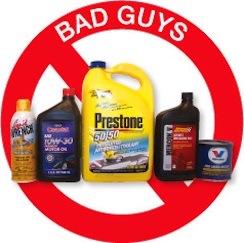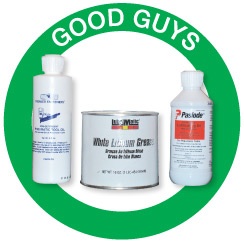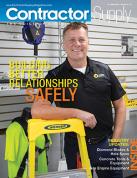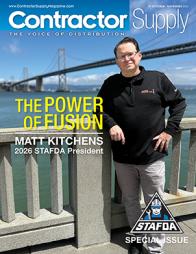Pneumatic Nailer Maintenance
Taking care of your best friend.
 I recall growing up around a family where the father was a builder and contractor. I was young but I remember that he always seemed to have his hammer dangling from the loop on his overalls. We would go over for a cookout or just a visit and I never saw him without that hammer. I understood tools; my father was a truck mechanic and my mother was a seamstress. But I was always perplexed about that hammer.
I recall growing up around a family where the father was a builder and contractor. I was young but I remember that he always seemed to have his hammer dangling from the loop on his overalls. We would go over for a cookout or just a visit and I never saw him without that hammer. I understood tools; my father was a truck mechanic and my mother was a seamstress. But I was always perplexed about that hammer.
One day I got enough nerve to ask him about it. He laughed and told me he depended on that hammer every day to help him make a living. He just kept it with him all the time and wanted to make sure he did not lose it. It was like an old friend to him.
Having watched my father carefully wipe and replace his tools in his box and my mother lovingly oil her Singer sewing machine, he made a lot of sense.
Nowadays, that hammer has been replaced in large part by the pneumatic nailer. The pneumatic nailer (nail gun) takes a bit more care than just hanging from your belt and keeping track of it.
Since the inception of the first nail and staple guns as viable tools for construction, roofers, framers, siding installers, remodelers, sheathing crews and contractors in general have felt the sting of picking up that favorite tool and hearing it go “fsssst,” — having it jam, misfeed, blow air out of the exhaust continually or just not do anything at all. You folks who work with these tools everyday understand what “favorite tool” means. It is like an extension of your body; fitting and feeling comfortably to your hand and running nails or staples smoothly and without interruption.
But, when that favorite tool is sick; so are you. Like giving chocolate to a dog, one of the biggest causes of lost time with your best friend is what you can put into it. You may mean well, but think twice.
 The nailer’s “do not feed” list
The nailer’s “do not feed” list
These items will cause you problems. Maybe not immediately, but in a short period of time you will have failures of o-rings, bumpers and the white plastic parts that make your tool run. Automatic transmission fluid, motor oil and hydraulic fluid and oil are lubricants in a sense, but they are not made for pneumatic tools. In some cases, they will cause the 0-rings to swell, crack and break.
These products also are engineered to absorb and carry dirt, sand, etc. through a system to a filter. Air tool oil is designed to maintain separation from impurities and provide a small level of water dissipation to help remove water from the tool. Always use oil that is recommended for pneumatic tools.
Wheel bearing grease, axle grease or other heavy greases are not as effective as white lithium, due to weight, grease particle size and concentration. White lithium grease reduces friction, while offering good adhesion to the parts it is applied to and a barrier to displacement by moisture absorption and transfer.
The use of acetone or antifreeze in air lines is never recommended. These materials will cause damage to the white plastic parts and the o-rings in your tool. Your best practice is prevention. Keep your tools in a room that is above 32-degrees and use oil with anti-freeze additives recommended for your tools, when winter temperatures fall below freezing.
 Pressure and volume
Pressure and volume
Another common misunderstanding is the difference between air pressure and volume.
High air pressures, in excess of 120psi, will also shorten your work time and the life of certain parts in your tools. Often these high pressures are the result of air volume availability. Low air volume can cause skips, jams and nails not driven flush or below. When users raise air pressures higher to attempt to compensate, o-rings and bumpers in the tool are unnecessarily stressed. The best practice is to limit the length of your air hose and use the proper hose diameter.
While the hose has storage value, excess hose length reduces the pressure at the outlet end. The diameter of the hose, where the length of hose to reach the work area of the tool exceeds 12 feet, should be 3/8 inches (inside diameter).
If excessive lengths of hose cannot be avoided, utilize a surge or storage tank. Typically, such tanks can be purchased in several capacities, rated in gallons. When sizing air storage needs, remember that 10 nails driven with a typical framing nailer will consume one cubic foot of air. A 10-gallon air tank, for example, will hold 1.34 cubic feet of air in reserve.
Pneumatic tools are engineered to withstand substantial shocks, impact and pressures. However, their reliability depends greatly on the user or the supplier that maintains the tool for them. No matter which way it is handled, be sure that your nail or staple gun is treated like what it is; your best friend. CS
 K.G. Sims has been in the pneumatic tool and fastener business for over 25 years as a manufacturing manager. K.G. shares patents on pneumatic tools and tool devices. He works with Southern Fastening Systems in strategic planning. You can reach him by e-mail at kelsogsims@gmail.com.
K.G. Sims has been in the pneumatic tool and fastener business for over 25 years as a manufacturing manager. K.G. shares patents on pneumatic tools and tool devices. He works with Southern Fastening Systems in strategic planning. You can reach him by e-mail at kelsogsims@gmail.com.
















